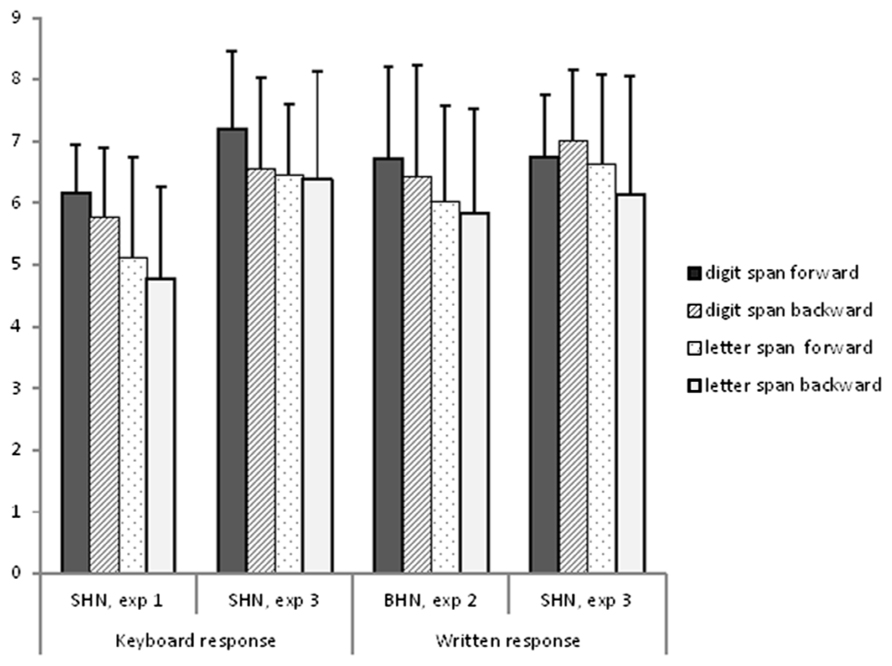

At the conceptual level, individual differences in WMC have two main sources.
#DIGIT SPAN PSYCHOLOGY LAB REPORT SERIAL#
In that way, WMC–operationalized as the number of to-be-remembered items recalled in correct serial order–is measured in conditions of interference caused by the second, processing component of the task. individual letters), which comprise the memory component of the tasks, participants are engaged in processing portion of the tasks (e.g. In span tasks, in between presentations of the individual to-be-remembered items (e.g. This twofold nature of the WMC is reflected in the structure of WM span tasks (span tasks). The second function is a strategic search of secondary memory, which reflects the capability to retrieve relevant information from longer-term storage, in the presence of competitive, irrelevant information. one’s capability to direct attention within the domain of primary memory in order to maintain relevant information in a highly activated state in the presence of interferences. The first function is executive attention, i.e.

Within the dual-component model, working memory capacity (WMC) is defined by two controlled functions of the central executive that surface in the conditions of interference. Thus, it is recommended that researchers discard this accuracy criterion as a criterion for filtering the results for further statistical analyses.īy developing further the concept of the central executive from Baddeley and Hitch’s working memory (WM) model, Engle and colleagues proposed a dual-component model of working memory capacity (for an overview, see: ). Omitting the 85% accuracy criterion on the processing component of the span tasks did not impair their psychometric properties. Furthermore, all tasks have satisfactory convergent construct validity as well as criterion validity estimated in relation to measures of fluid intelligence. 70 the exception being all types of the symmetry span task absolute scores with α values close to. All the tasks had an adequate internal consistency with Cronbach’s αs equal to or above. The study demonstrates that the group administration of span tasks does not compromise their psychometric characteristics. Metric characteristics of all measures were compared across two parallel analyses: with and without application of a typical 85% accuracy criterion on the processing component of the tasks. For each task, the metric characteristics of six scoring procedures were evaluated: partial, absolute, partial non-weighted, absolute non-weighted, partial weighted, and absolute weighted scoring. Biological psychiatry.The study examined the psychometric characteristics of three automated working memory span tasks: operational, reading, and symmetry span task, administered in groups of participants. R Medicine > RC Internal medicine > RC0321 Neuroscience. Publication Type:Īdolescent, Adult, Analysis of Variance, Autistic Disorder, Female, Humans, Male, Memory, Short-Term, Mental Recall, Middle Aged, Neuropsychological Tests, Serial Learningī Philosophy. Confirming these findings, the results of Experiment 3 showed that the ASD group had more difficulty detecting a change in the temporal sequence of the items. Experiments 1 and 2 showed that group differences were due to memory for the order of the items, not to memory for the items themselves. The ASD group showed poorer performance in all 3 experiments. Experiment 3 tested short-term order memory with an order recognition test: Each word list was repeated with or without the position of 2 adjacent items swapped. Hence, this task called more heavily on item memory.

Experiment 2 used a standard immediate serial recall task where, contrary to the digit-span task, items (words) were not repeated from list to list. Experiment 1 involved forward and backward digit recall. Three experiments examined verbal short-term memory in comparison and autism spectrum disorder (ASD) participants.


 0 kommentar(er)
0 kommentar(er)
